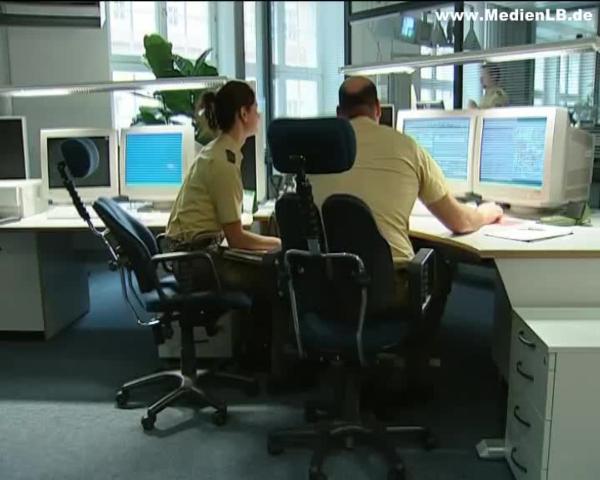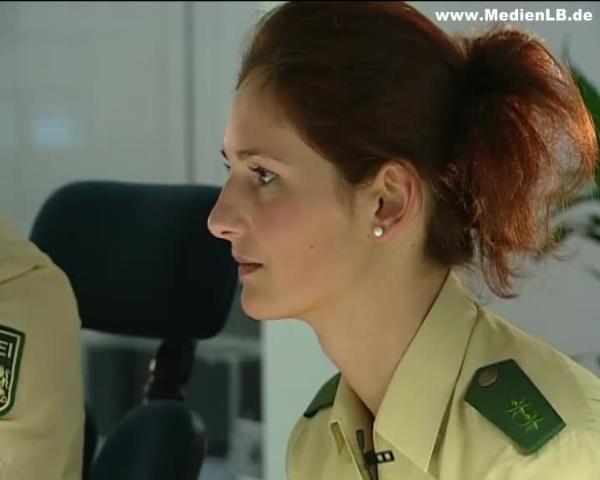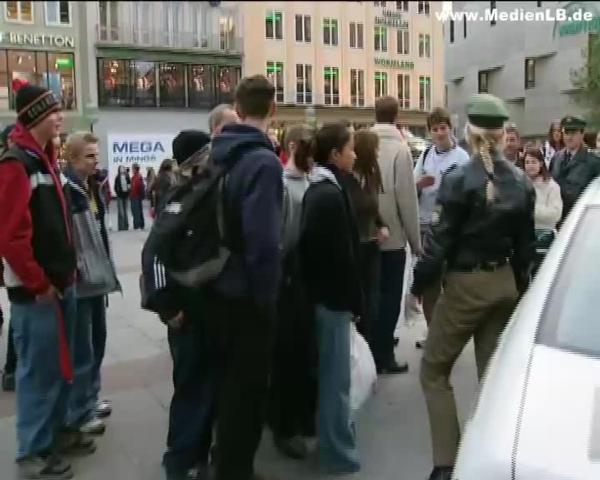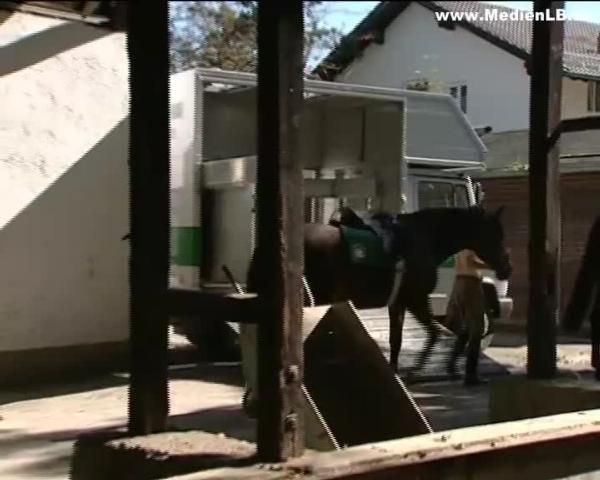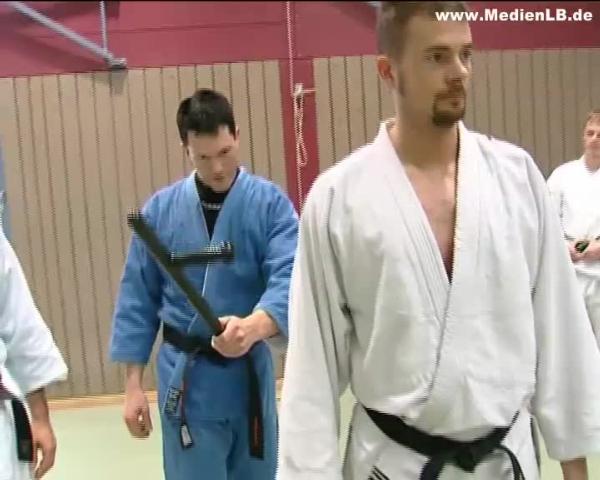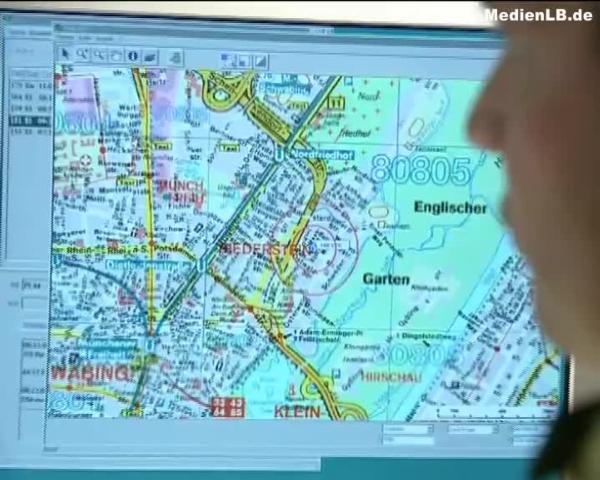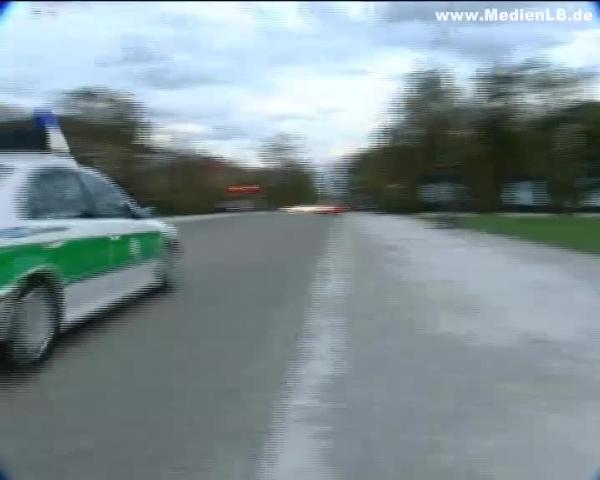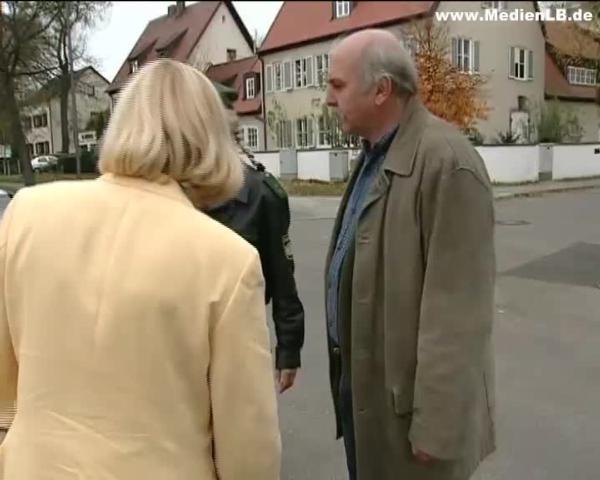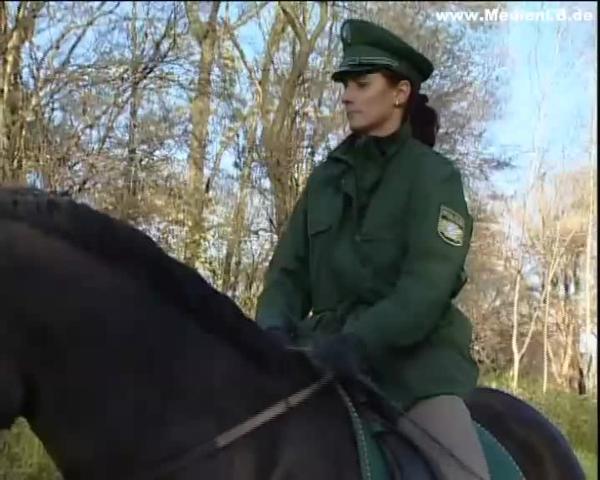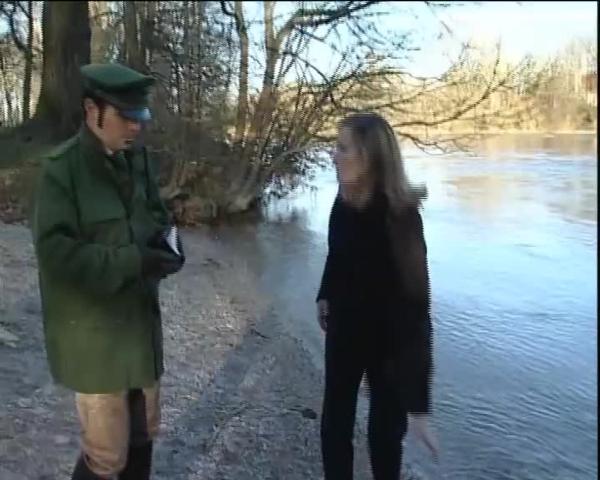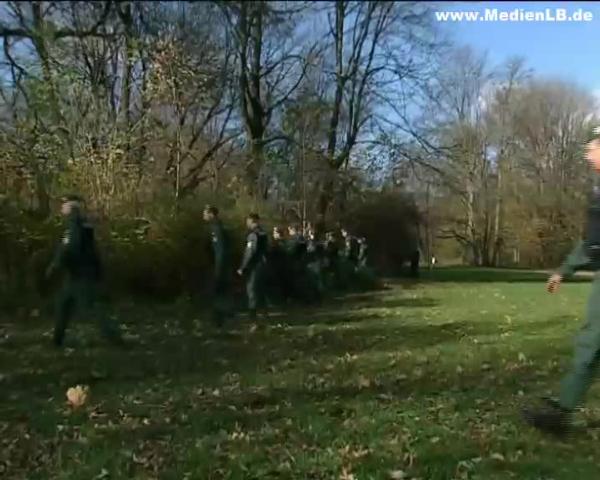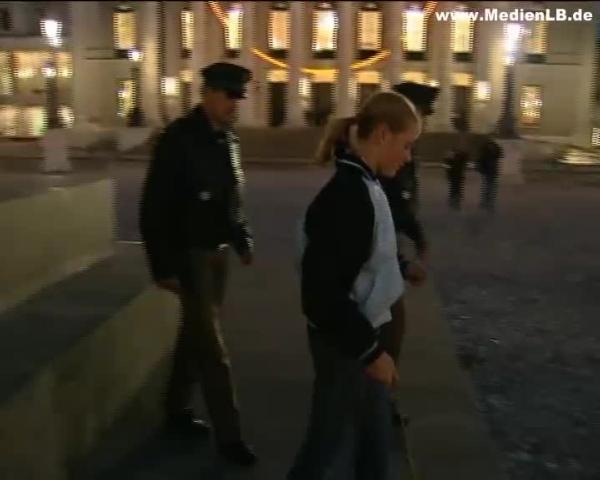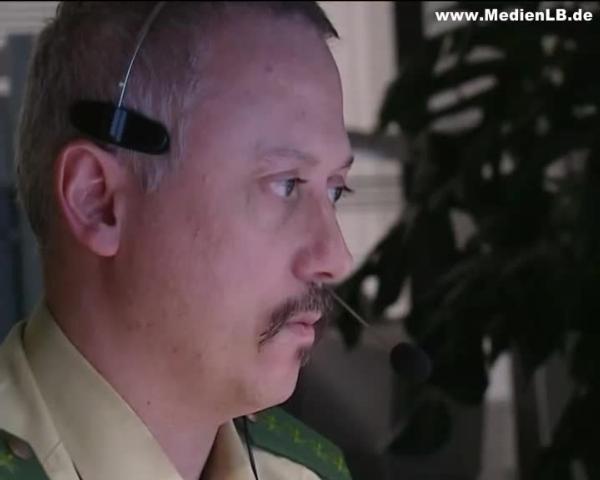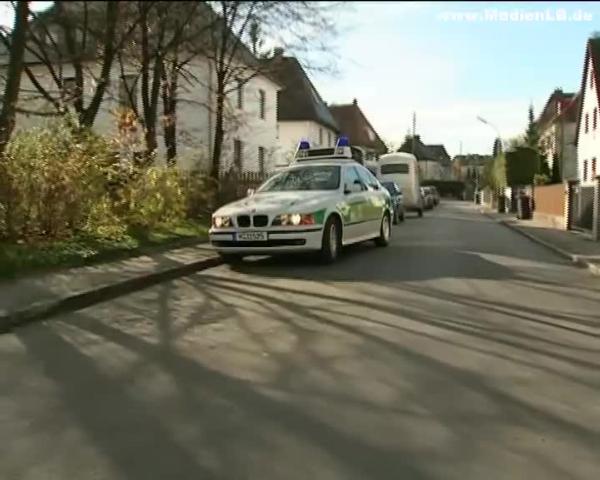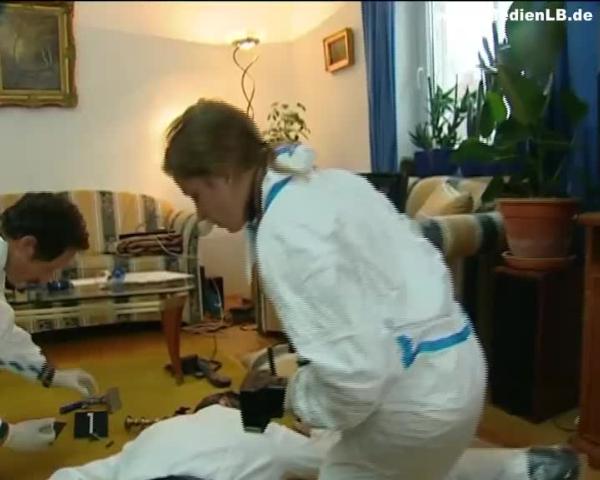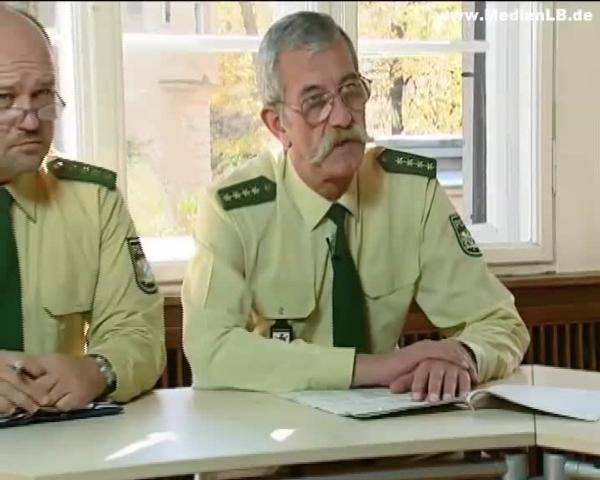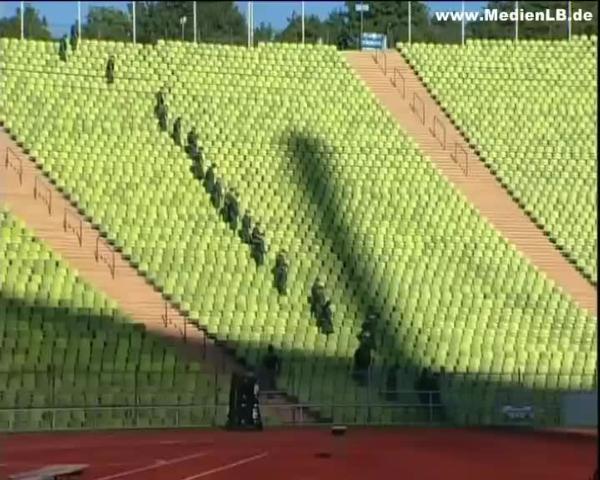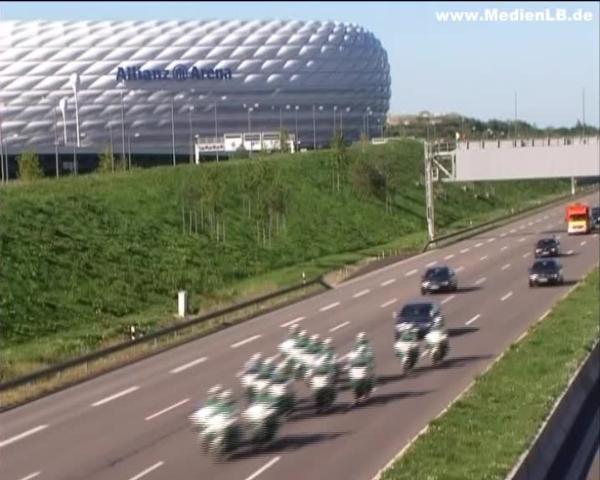Polizei
Einsatz für Sicherheit

Police

1. Police Routine 1.1 At the Centre of Operations At the police centre of operations, on a Friday. All emergency calls, number 110, arrive here. Accidents, offences, acts of violence.... All emergency calls are collected here and passed on to the respective task forces. It is 7 a.m.. Nothing out of the ordinary. On average about 2.500 calls are received daily at the centre of operation. That means every two minutes an operation is started. The demands on the police forces are constantly increasing – only the sophisticated technology of the nerve centre makes a sensible coordination of the high number of police operations possible. Original soundtrack: “Lifeless male person, on the ground. Colleagues are on the spot.” O. s.: “Mandl Street 33 in Schwabing. The emergency doctor is coming.” O. s.: “OK, thanks. So long.” 1.2 With Policemen on the Beat Routine patrol through the city centre. Full of curiosity an English school class clusters around the police car. Passers-by ask the way. Providing information, showing the way, the friendly policemen like to help! O. s.: “The next street turn left and the second street to the right. Then you are directly in front of the Hofbräuhaus.” After dusk the patrol comes across a careless girl on skates in the city centre. Policeman: “Could you go to the right, please ..... thank you.” Skater: “Hi, hello.” Policeman: “Hello. Now you're wondering why we've stopped you, aren't you?” Skater: “Yes.” Policeman: “Well, you aren't allowed to go along the street on your inline skates. They are sports equipment. You must stay on the pavement with them.” Skater: “Sorry, I didn't know that.” Policeman: “And there you have to be careful, too, not to obstruct or endanger people walking along there.” Skater: “OK.” Policeman: “And it's much safer there, especially because it's already getting quite dark and your clothes are rather dark, too – you can't be seen very well.” 1.3 The Mounted Police The mounted police is a department of its own. Those who work here must know a lot about horses and how to handle them. Man and horse are a team – but only after a long training and a lot of patience. The tall geldings aren't easily startled – even a pistol shot doesn't move the horses. Most people have respect for the big animals and are likely to step back a little. This makes the horses especially suitable for operations at mass rallies. The colleagues of the mounted police have loaded their geldings safely into the horse trailer. Now they are ready for the large-scale operation at an international soccer match tonight. 1.4 Practical Training O.s.: “Fending off multiple attacks. Now we demonstrate a combination. I'll explain the details later, then we are going to practise all together.” To be fit for the ordinary police job, policemen must train regularly. In the gym the holds and sequences of movements that are important for the action outside are practised. O.s.: “Stick in the left hand. We step up sideways from behind to our adversary. Take his hand with the short end, grab the short end with the right hand, switch to the inside of the elbow, the lob comes, over the shoulder to the ground.” There is no room for squeamishness here. Training hard is essential. In the police force men and women undergo the same training. 2. Traffic Accident 2.1 Turnout of the Patrol Car In the centre of operations an ultra-modern computer system is used. Every street, even the smallest, is listed in this system. O.s.: “Well, look here, here is a direct report of an accident. I'm going to click on it and then we'll see: Osterwald Street and Imhof Street.” It is unclear whether and how many persons have been injured in the accident. The information of the callers is often vague. That's why they must hurry. At almost 80 kilometres per hour the policemen race through the city centre. When turning out with their blue light flashing, the officers must recognize dangers in time and react quickly if need be. This ability is trained by the policemen in special driving courses. In a few minutes the patrol car will be at the scene of the accident. 2.2 Finding out how the accident happened O.s. man involved in the accident: “...... came rushing out.” O.s. woman involved: “I didn't come rushing out, I turned into the street as usual. Look here, you must have seen me, that's not possible. Ah, here come the police, they will clear this up. We'll see right now.” An ordinary accident. Actually nothing much has happened. Just some damage to the bodywork. But the people involved in the accident don't agree as to who is to be blamed. So the officers' first task is – mediation. Both people involved believe they behaved correctly, whereas the other didn't follow the Highway Code. At last the young policewoman and her colleague have separated the arguing parties. Policewoman: “Lothar, Ulrich, born Lothar.” Particulars are taken down and statements from the people involved are recorded. Both people concerned have described in detail how the accident happened, it is true, but from their own point of view, of course. O.s.: “Did you see her in the beginning or didn't you?” O.s.: “I looked and there was no one. And then I continued as usual.” Therefore skidmarks and damage to the cars are eventually the most important clues for the officers to determine objectively the question of who is responsible. To avoid later uncertainties from the very beginning the facts of the accident are reconstructed and documented meticulously. 3. Search for a Person 3.1 Reported Missing Mother: “Hello, here, here! Hello, my daughter has disappeared.” Policeman: “How long ago was that?” Mother: “Just now. She always goes for a walk with the dog. Today, too, and she hasn't come back. Now I have looked for her and have found her rucksack. It was on the Isar, quite close to the water.” The worried mother shows the officers where she found her daughter's rucksack. A dangerous place for children, in the immediate vicinity of the raging currents of the Isar. Policeman: “We'll radio at once. Isar from 76 64.” Policeman: “Isar 7664 come in.” Policeman: “We've got a girl missing in the English Garden.” Policeman: “Where exactly in the English Garden are you?” Policeman at the computer (centre of operations): “If you look, the Eisbach, it's quite near really, if it is a 12-year-old girl, well, several people have already drowned there, also in the Eisbach.” An incident whose urgency is at once realized by the centre of operations. Policewoman: “Could you come at once. There's something up in the English Garden. A child goes missing. Maybe she has fallen into the Isar. It's about our coordination.” Few minutes later the head of the task force has arrived. Now the mother must describe her daughter exactly. Only then the officers can look for the little girl effectively. Mother: “She always goes along here and I was worrying. She has never been away so long.” 3.2 The Search Operation A task force of 100 police officers arrives and is going to support the search. The head of the task force, short ADL, coordinates the whole search operation. The policemen form a line and comb through the whole area. None of the officers talk about it, but all hope the young girl won't be found here. At the same time the fire service supports the search with a rubber dinghy and professional divers. Diving into the Isar here won't be easy. And in fact the raging currents cause problems. A police helicopter, too, participates in the search. With its help the area is searched in a wider circle. Office of superintendent 114: Their special field – missing persons and unidentified dead people. The officers want to comb through the people associated with the missing girl, talk to friends and relatives about her whereabouts. To them it is nothing unusual that children simply stay away thoughtlessly, without leaving a message. The helicopter is manned by a crew of four and equipped with a lot of attachments such as a winch, searchlights, thermal imaging camera and residual light amplifier to be able to continue the search in the dark and in extremely difficult terrain. From up here the area and the widespread search operation are clearly visible. Many people and machines have been deployed for the missing girl. However, the search is in vain. 3.3 The Happy End On their patrol round in the evening the young police officers' attention is caught by a little girl with a dog. In the middle of the city and all alone. Is this perhaps the missing girl? From the little girl's statement and the description of the centre of operations there is no doubt any longer. Policewoman: “Can you come with us a minute?” Girl: “Yes.” Kim admits to the two officers that she ran away because she was frightened. She had got a six in maths and had concealed it from her mother. The policewoman at once reports to the centre of operations that the girl has been found and the extensive search operation can be stopped. The exciting odyssey has an end here for the little one and her dog. Policeman: “Fine, perfect.” Policeman: “Can you fasten your seatbelt?” Girl: “Yes. I can.” 4. Criminal Prosecution 4.1 Fact Finding Policeman on the emergency phone: “Emergency centre, hello, ...” Once again there is an argument in a block of flats – a neighbour is worried after hearing shouts and noises of a fight in the flat below. Policeman on the emergency phone: “OK, Mr. Fischer, I'll send someone around.” Shortly after the neighbour's call the patrol arrives at the scene. The house owner has already been informed and is waiting for the two officers. He didn't want to make his own inquiries in the flat. Both officers are wondering what they will find there. They don't think of a serious crime yet, their procedure is routine. Policeman: “Clea, there is someone.....” The man is dead. Policeman: “I can't find any pulse.” Policewoman: “I'll call the emergency doctor.” 4.2 Criminal Investigation Department The officers of the criminal investigation department get the facts elicited so far. Policeman: “And we got the information from a neighbour.” Meanwhile the scene of the crime is sealed off. Shortly after the forensic team arrives. Now the examination of the scene of crime can start. The members of the forensic team must work meticulously. Every exhibit is numbered. These fingerprints on the wine glass are perhaps decisive for the solution of the crime. Are they the victim's or the murderer's? In this case the fingerprints seem to be very well preserved. Forensic team: “Let me see, a fingerprint. This is a good one.” The officers are not always as lucky as here. Obviously the murderer was quite careless. Forensic team: “I'll have a look at the beer can at once.” The DNA samples are just as important. The policewoman tries to get some forensically usable traces of saliva from the empty beer can. Perhaps it is the DNA once again that convicts the criminal. Doctor: “Are there any injuries?” Forensic team: “Yes, the only visible injury for the moment is to the head.” Meanwhile the police doctor has arrived at the crime scene and examines the body. Cause of death is probably some violent blow to the head. The murder weapon seems to be identified. Time and cause of death can be considered almost certain. The body is taken to the forensic institute for post-mortem findings. 5. Special Police Operations 5.1 Soccer Match Briefing for a top soccer match – tonight. A huge event lies ahead. The chief constable is coordinating today's action in the stadium with his colleagues. Everything must be planned right down to the last detail. Chief constable: “We expect about 50 busloads of fans. We'll try to get them as near to the stadium as possible.” Before kick-off the stadium is searched for dangerous objects. Meanwhile the mounted police have arrived, too. In spite of the toy trumpets and the shouting the geldings remain calm – they are used to the presence of fans. Meanwhile the area around the stadium gets more and more crowded. The atmosphere is getting noisy. Alcohol is having its effect. There is a black-market boom in last-minute tickets. The police are handing out handbills – they appeal to all fans to treat each other fairly. The players aren't on the field yet – the seats in the stadium are filling gradually. The fans don't feel bothered. Riot police and supporting command occupy the fan blocks. Alcohol ..... stirs up feelings. With the camera enthusiasts and agitators are being monitored. The atmosphere is close to boiling point. Riot police closes in to be able to nip possible uproars quickly in the bud. The match goes on – the stadium is at boiling point. The spectators' safety has top priority – whoever starts rioting is arrested. Every fan block is under video surveillance. By radio every patrol can be contacted directly. The chief constable has everything under control on the spot. Conscientiously he makes sure that the operation works out without a hitch – that the atmosphere in the stadium remains manageable. Every policeman has his task and his special place in the team. The soccer match ends peacefully for all people involved. The football world championship 2006 already took place in the new Allianz-Arena in Munich. After this large-scale operation the Munich police drew up a positive balance sheet. About 66.000 spectators followed the opening match. About 3.000 policemen were deployed for the world championship start in Munich. Also thanks to the high security resulting from the number of police forces present, everybody will keep pleasant memories of the world championship. 5.2 Papal Visit When Pope Benedict XVI comes to Munich on 9th and 10th September 2006, the whole city centre is sealed off. Because of the expected huge crowd the papal visit requires security precautions similar to those of the past football world championship. An enormous police escort accompanies the Holy Father on his way from Munich airport to the city centre. Barriers along the route of the 'Popemobile' keep the faithful in check. Everyone wants to be right in front. There are strict access controls to the area around the Marienplatz. Police forces are present throughout the inner city. The mega-event must be secured responsibly and extensively – after all, besides the pope there are also high-ranking politicians visiting Munich. Box seats looking down on the events are much in demand. The faithful from all over the world receive their Holy Father enthusiastically but peacefully. So this large-scale operation, too, works out smoothly without incident.


